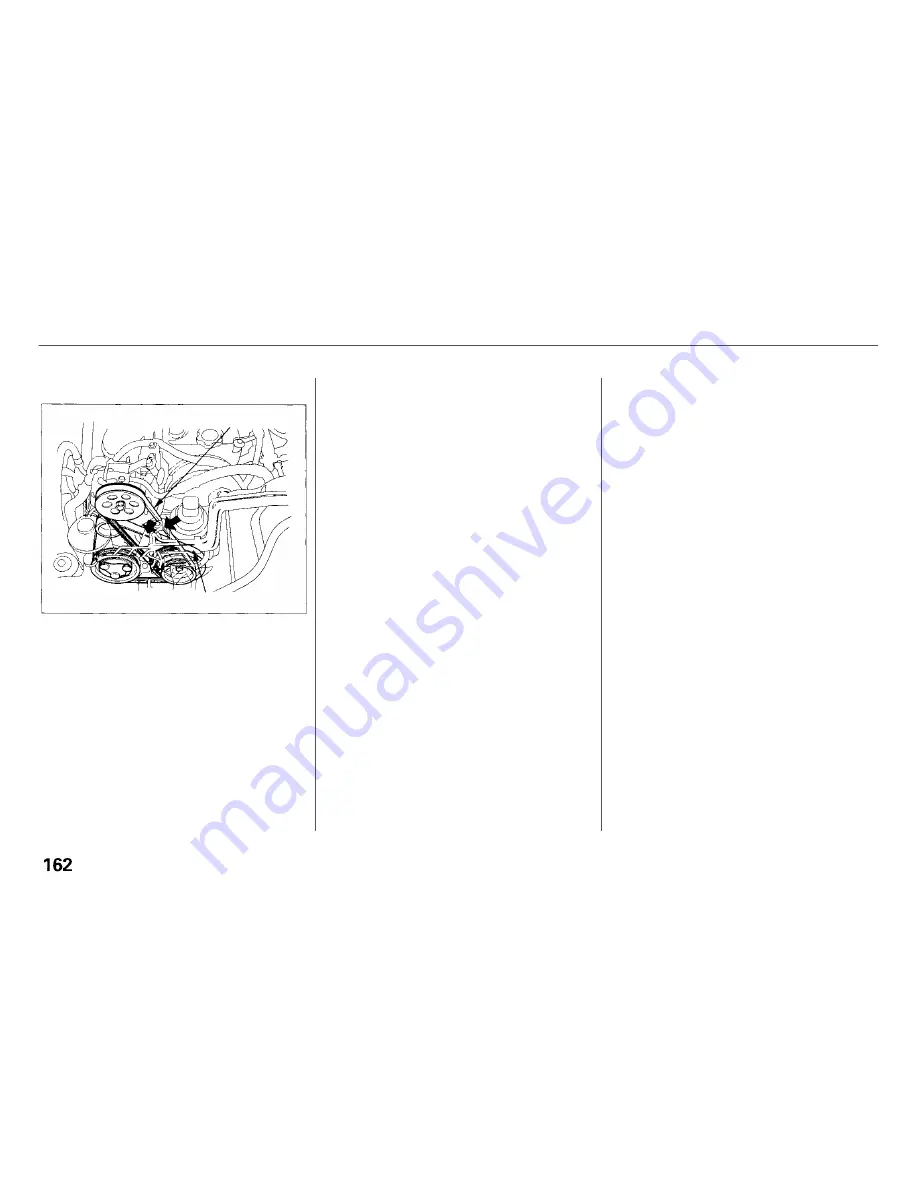
Engine Belts, Tires
Engine Belts
Check the condition of the two
engine belts. Examine the edges of
each belt for cracks or fraying.
Check the tension of each belt by
pushing on it with your thumb
midway between the pulleys.
The belts should have the following
"play" or deflection.
Alternator belt:
(On cars without A/C)
10.5—12.5 mm (0.41—0.49 in)
(On cars with A/C)
8.0 — 10.5 mm (0.31— 0.41 in)
Power steering belt:
13.0 —16.0 mm (0.51— 0.63 in)
If you see signs of wear or looseness,
have your dealer adjust or replace
the belts.
Tires
To safely operate your car, your tires
must be the proper type and size, in
good condition with adequate tread,
and correctly inflated. The following
pages give more detailed information
on how and when to check air
pressure, how to inspect your tires
for damage, and what to do when
your tires need to be replaced.
Maintenance
POWER STEERING BELT
ALTERNATOR BELT
Using tires that are ex-
cessively worn or improperly
inflated can cause a crash in
which you can be seriously
hurt or killed.
Follow all instructions in this
owner's manual regarding
tire inflation and
maintenance.
















































